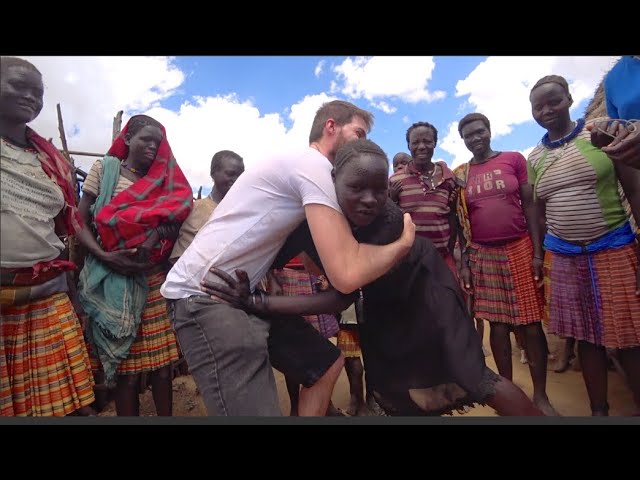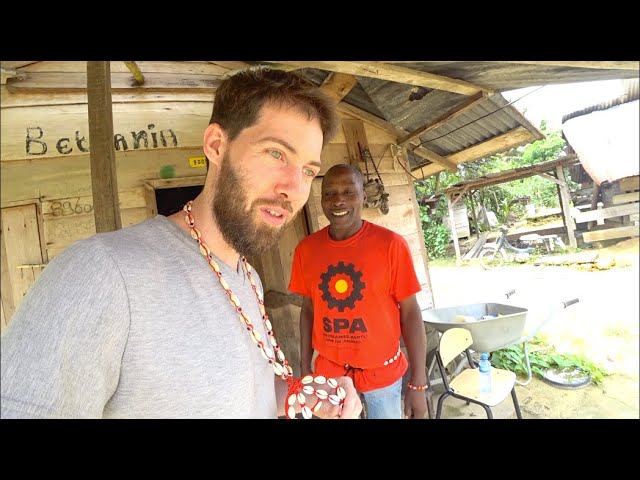Suriname’s Maroons are a fascinating group of people who escaped slavery centuries ago and found refuge in the Amazon rainforest. Today, these Maroon villages still maintain African languages and customs, making it the most African place outside of Africa. As you explore the captivating landscapes of Suriname, you’ll witness the unique blend of African traditions and South American influence. From the linguistic challenges to the rich cultural heritage, this video by Sabbatical promises to take you on an incredible journey through Suriname’s Maroon villages. Get ready to immerse yourself in a world that feels like both Africa and South America, all in one magical place.
Best Deals to Surinam by BOOKING.COM
Suriname’s Maroons: The Most African Place Outside of Africa
Suriname, a country located in South America, is home to a unique group of people known as the Maroons. These Maroons are descendants of escaped slaves who fled to the Amazon rainforest centuries ago, forming new tribes and creating communities that have preserved African languages and traditions. Suriname’s Maroon villages are truly one of a kind, making it the most African place outside of Africa.
Background of Suriname’s Maroons
The Maroons’ history dates back to the time when Suriname was a Dutch colony. Slavery was prevalent during this period, and many African slaves were brought to the colony to work on plantations. However, some of these slaves managed to escape and seek refuge in the dense Amazon rainforest. Over time, these escaped slaves formed their own tribes, living independently and maintaining their African cultural heritage.

FIND YOUR BEST HOTEL IN SURINAM WITH BOOKING.COM
Escaped Slaves in the Amazon Rainforest
The escape of slaves to the Amazon rainforest allowed them to establish new communities far away from their oppressors. The dense forests provided a natural barrier, making it difficult for slave owners to recapture them. These tribes became known as Maroons and developed their own distinct cultures and traditions.
Formation of New Tribes
As more slaves escaped and joined the Maroon communities, new tribes began to form within the rainforest. These tribes consisted of individuals from various parts of Africa, bringing with them their unique languages, customs, and practices. The Maroons successfully created societies that were separate from the Dutch colony, ensuring their independence and preservation of their African identity.
Preservation of African Languages and Traditions
One of the remarkable aspects of Suriname’s Maroon villages is the continued use of African languages and the preservation of African customs. Despite centuries of separation from their original homelands, the Maroons have managed to maintain their linguistic heritage and cultural practices.
Continued Use of African Languages
The linguistic diversity within Suriname is astounding, with various African languages still spoken in Maroon communities. One of the most prominent languages is Saramaka, spoken by the Saramaka Maroons. Saramaka is a creole language that incorporates words from Portuguese, English, Dutch, and various West African languages such as Twi. The strong influence of West African languages is evident in the use of tones in Saramaka, a feature unique to West Africa.
Maintenance of African Customs
In addition to language, the Maroons have also managed to preserve African customs and traditions. These customs encompass a wide range of aspects, including spiritual beliefs, music, dances, and craftsmanship. By passing down these practices from generation to generation, Maroon communities have kept their African heritage alive and vibrant.

Language Challenges in Suriname
While the Maroons have successfully preserved their African languages, Suriname as a whole faces unique language challenges due to its history and colonial influences.
Linguistic Diversity in Suriname
Suriname is a country known for its linguistic diversity. As a former Dutch colony, the official language is Dutch. However, Dutch is not widely spoken in many areas of Suriname, including the Maroon villages. Instead, a local creole language known as Sranan Tongo or Surinamese Creole is more prevalent. This creole language combines elements of English and Dutch but may be difficult for outsiders to understand.
Surinamese Creole Languages
Apart from Sranan Tongo, there are various other creole languages spoken in Suriname, including Saramaka. These creole languages evolved as a result of the linguistic blend that occurred during the country’s history. Surinamese Creole languages are a testament to the cultural fusion and contribute to the rich linguistic landscape of Suriname.
The Strong West African Influence in Suriname
The influence of West Africa on the Maroon communities in Suriname cannot be overstated. Among the Maroon tribes, the Saramaka Maroons hold the most prominence and exert a significant cultural impact.
Saramaka Maroons: The Most Influential Tribe
The Saramaka Maroons are one of the largest and most influential Maroon tribes in Suriname. They have played a crucial role in preserving African traditions and language, making them a cornerstone of Surinamese cultural identity. The Saramaka Maroons have successfully maintained their distinct customs and have become a symbol of resilience and cultural pride.
Saramaka Language with West African Influences
The Saramaka language, spoken by the Saramaka Maroons, is a testament to the strong influence of West African languages. While Saramaka is technically a creole language, it incorporates a significant percentage of words from Portuguese, English, Dutch, and West African languages like Twi. The use of tones in Saramaka, similar to those found in West African languages, further highlights the profound connection to the ancestral homeland.

Conclusion
Suriname’s Maroon villages are a living testament to the resilience and cultural preservation of African heritage. Through the escape of slaves to the Amazon rainforest, the Maroons were able to form new tribes, maintain their African languages, and preserve their customs and traditions. Suriname truly stands out as the most African place outside of Africa. The Maroons’ story not only highlights the historic struggles of the African diaspora but also emphasizes the importance of cultural preservation and identity. Suriname’s Maroons are a vibrant and integral part of the country’s diverse cultural landscape.
